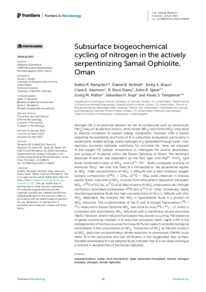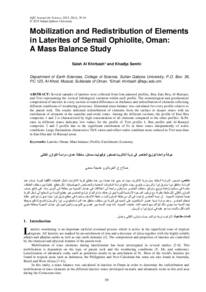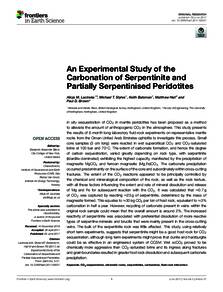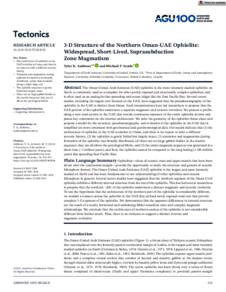وثيقة
Subsurface biogeochemical cycling of nitrogen in the actively serpentinizing samail ophiolite, Oman.
المعرف
DOI: 10.3389/fmicb.2023.1139633
المصدر
Frontiers in Microbiology. v. 14, 1139633
الدولة
Switzerland
الناشر
Frontiers Media S.A.
ميلادي
2023-01-01
اللغة
الأنجليزية
الملخص الإنجليزي
Nitrogen (N) is an essential element for life. N compounds such as ammonium ((Formula presented.)) may act as electron donors, while nitrate ((Formula presented.)) and nitrite ((Formula presented.)) may serve as electron acceptors to support energy metabolism. However, little is known regarding the availability and forms of N in subsurface ecosystems, particularly in serpentinite-hosted settings where hydrogen (H2) generated through water–rock reactions promotes habitable conditions for microbial life. Here, we analyzed N and oxygen (O) isotope composition to investigate the source, abundance, and cycling of N species within the Samail Ophiolite of Oman. The dominant dissolved N species was dependent on the fluid type, with Mg2+- (Formula presented.) type fluids comprised mostly of (Formula presented.), and Ca2+-OH− fluids comprised primarily of ammonia (NH3). We infer that fixed N is introduced to the serpentinite aquifer as (Formula presented.). High concentrations of (Formula presented.) (>100 μM) with a relict meteoric oxygen isotopic composition (δ18O ~ 22‰, Δ17O ~ 6‰) were observed in shallow aquifer fluids, indicative of (Formula presented.) sourced from atmospheric deposition (rainwater (Formula presented.) : δ18O of 53.7‰, Δ17O of 16.8‰) mixed with (Formula presented.) produced in situ through nitrification (estimated endmember δ18O and Δ17O of ~0‰). Conversely, highly reacted hyperalkaline fluids had high concentrations of NH3 (>100 μM) with little (Formula presented.) detectable. We interpret that NH3 in hyperalkaline fluids is a product of (Formula presented.) reduction. The proportionality of the O and N isotope fractionation (18ε / 15ε) measured in Samail Ophiolite (Formula presented.) was close to unity (18ε / 15ε ~ 1), which is consistent with dissimilatory (Formula presented.) reduction with a membrane-bound reductase (NarG); however, abiotic reduction processes may also be occurring. The presence of genes commonly involved in N reduction processes (narG, napA, nrfA) in the metagenomes of biomass sourced from aquifer fluids supports potential biological involvement in the consumption of (Formula presented.). Production of (Formula presented.) as the end-product of (Formula presented.) reduction via dissimilatory nitrate reduction to ammonium (DNRA) could retain N in the subsurface and fuel nitrification in the oxygenated near surface. Elevated bioavailable N in all sampled fluids indicates that N is not likely limiting as a nutrient in serpentinites of the Samail Ophiolite.
ISSN
1664-302X
قالب العنصر
مقالات الدوريات




